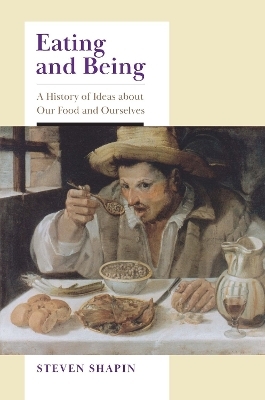
Eating and Being
University of Chicago Press (Verlag)
978-0-226-83221-0 (ISBN)
Eating and Being is a history of Western thinking about food, eating, knowledge, and ourselves. In modern thought, eating is about what is good for you, not about what is good. Eating is about health, not about virtue. Yet this has not always been the case. For a great span of the past—from antiquity through about the middle of the eighteenth century—one of the most pervasive branches of medicine was known as dietetics, prescribing not only what people should eat but also how they should order many aspects of their lives, including sleep, exercise, and emotional management. Dietetics did not distinguish between the medical and the moral, nor did it acknowledge the difference between what was good for you and what was good. Dietetics counseled moderation in all things, where moderation was counted as a virtue as well as the way to health. But during the nineteenth century, nutrition science began to replace the language of traditional dietetics with the vocabulary of proteins, fats, carbohydrates, and calories, and the medical and the moral went their separate ways. Steven Shapin shows how much depended upon that shift, and he also explores the extent to which the sensibilities of dietetics have been lost.
Throughout this rich history, he evokes what it felt like to eat during another historical period and invites us to reflect on what it means to feel about food as we now do. Shapin shows how the change from dietetics to nutrition science fundamentally altered how we think about our food and its powers, our bodies, and our minds.
Steven Shapin is professor emeritus of the history of science at Harvard University. His books include Leviathan and the Air-Pump: Hobbes, Boyle, and the Experimental Life (with Simon Schaffer); The Scientific Life: A Moral History of a Late Modern Vocation; The Scientific Revolution; A Social History of Truth: Civility and Science in Seventeenth-Century England; and Never Pure: Historical Studies of Science as if It Was Produced by People with Bodies, Situated in Time, Space, Culture, and Society, and Struggling for Credibility and Authority.
List of Figures
Introduction: What’s for Dinner?
Chapter 1: The Words and Ways of Traditional Dietetics
Chapter 2: Medicine, Morality, and the Fabric of Everyday Life
Chapter 3: How to Know about Your Food and How to Know about Yourself
Chapter 4: You Are What You Eat: Types of People and Types of Food
Chapter 5: Talking Back to the Doctors: Medical Expertise and Ordinary Life
Chapter 6: Dietetics Modernized? Mathematics and Mechanism
Chapter 7: Dietetics Revolutionized? Common Sense, Common Life, and Chemical Expertise
Chapter 8: Nutrition Science: Constituents and Their Powers
Conclusion: The Way We Eat Now
Notes
Bibliography
| Erscheinungsdatum | 19.11.2024 |
|---|---|
| Zusatzinfo | 26 halftones |
| Sprache | englisch |
| Maße | 152 x 229 mm |
| Gewicht | 907 g |
| Themenwelt | Medizin / Pharmazie ► Gesundheitsfachberufe ► Diätassistenz / Ernährungsberatung |
| Naturwissenschaften | |
| Sozialwissenschaften ► Soziologie | |
| ISBN-10 | 0-226-83221-X / 022683221X |
| ISBN-13 | 978-0-226-83221-0 / 9780226832210 |
| Zustand | Neuware |
| Haben Sie eine Frage zum Produkt? |
aus dem Bereich


